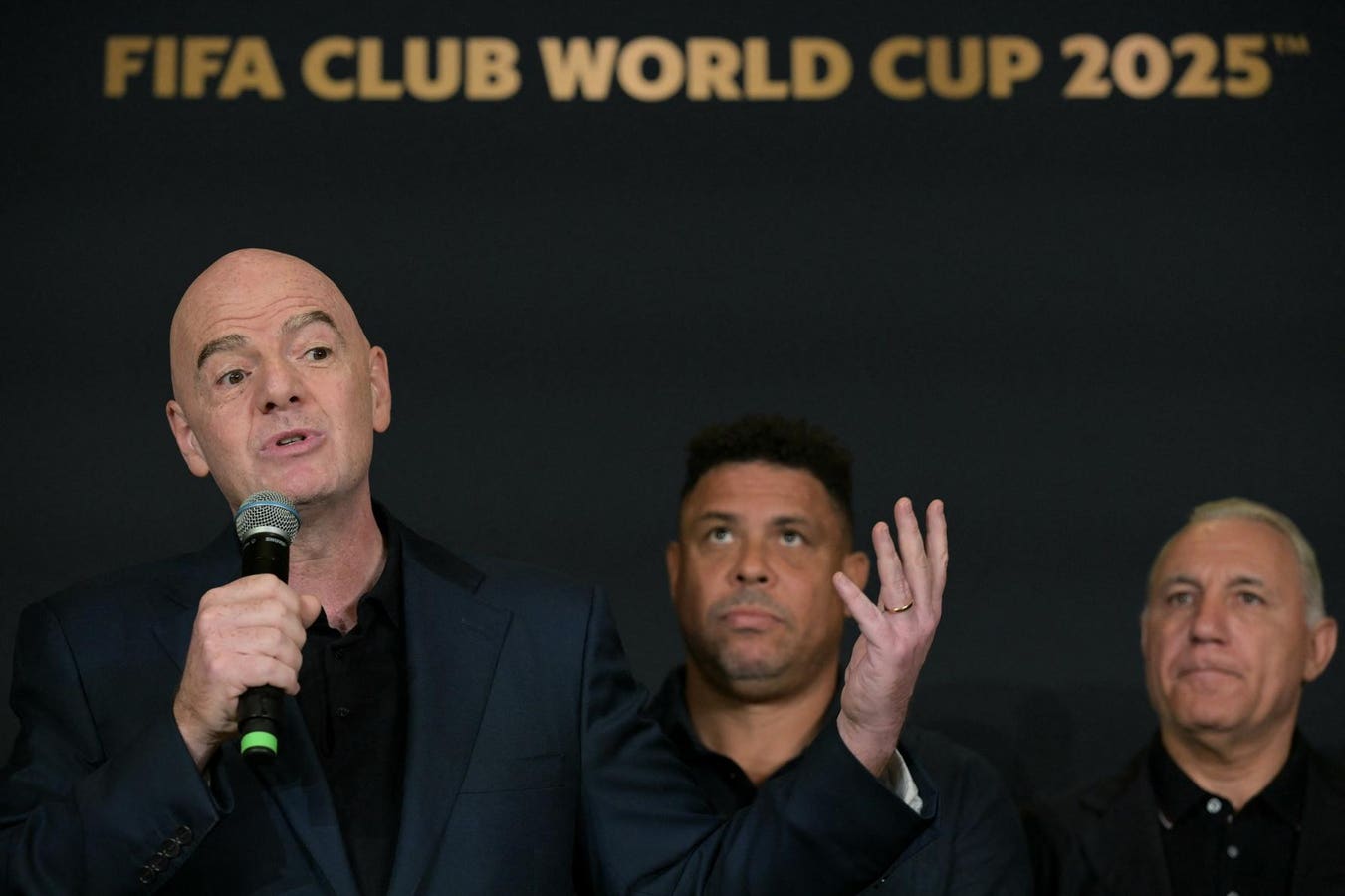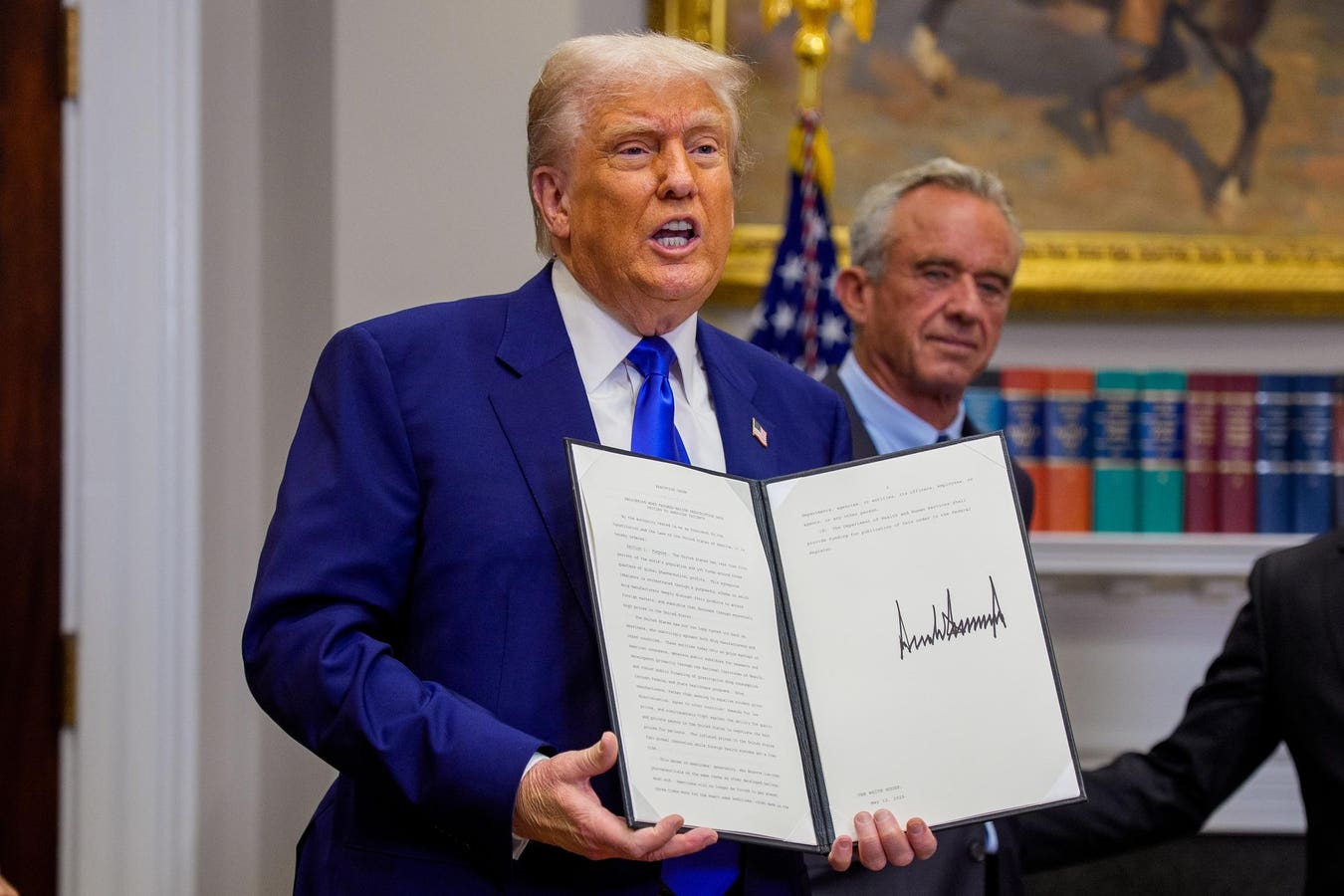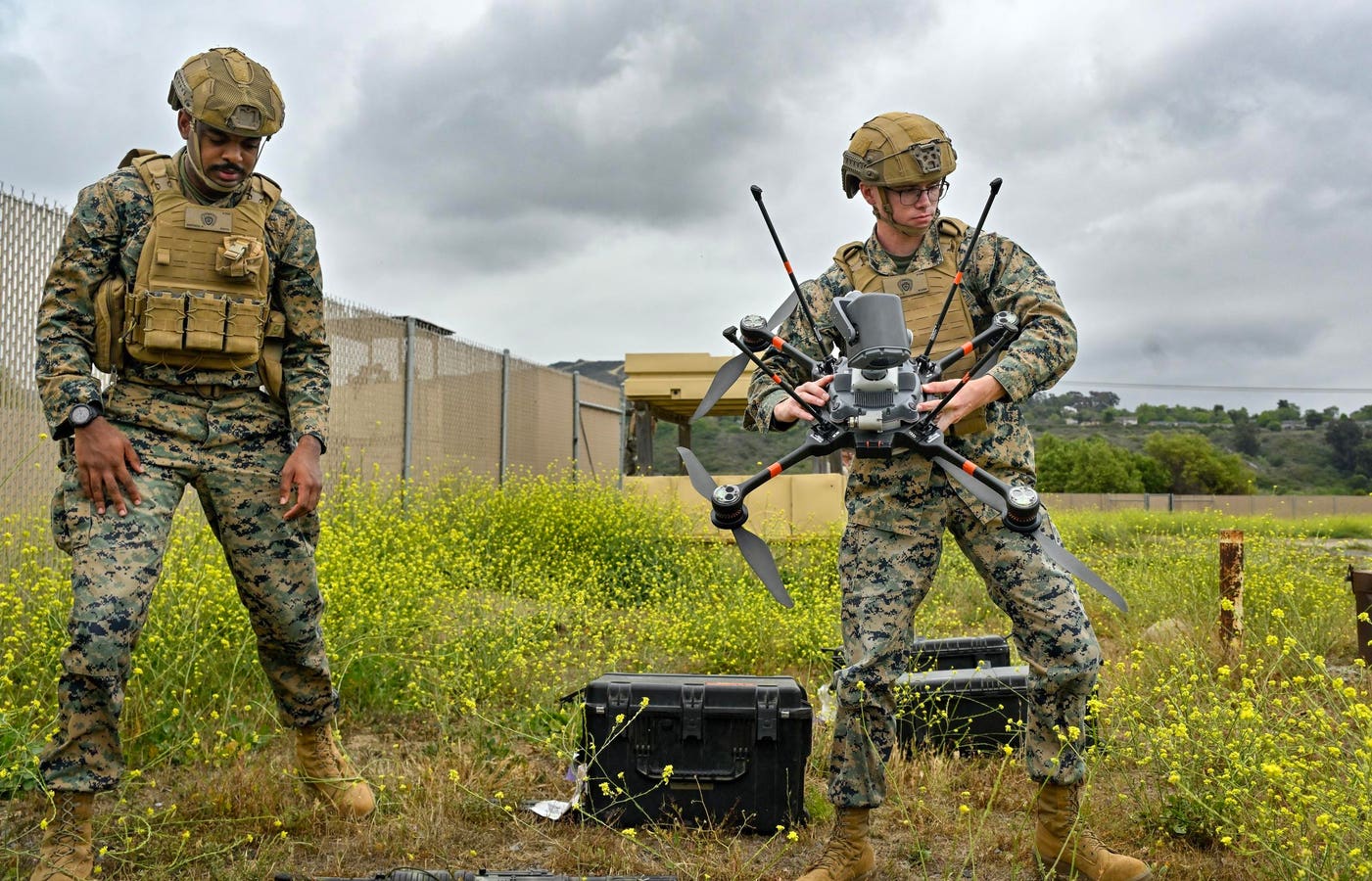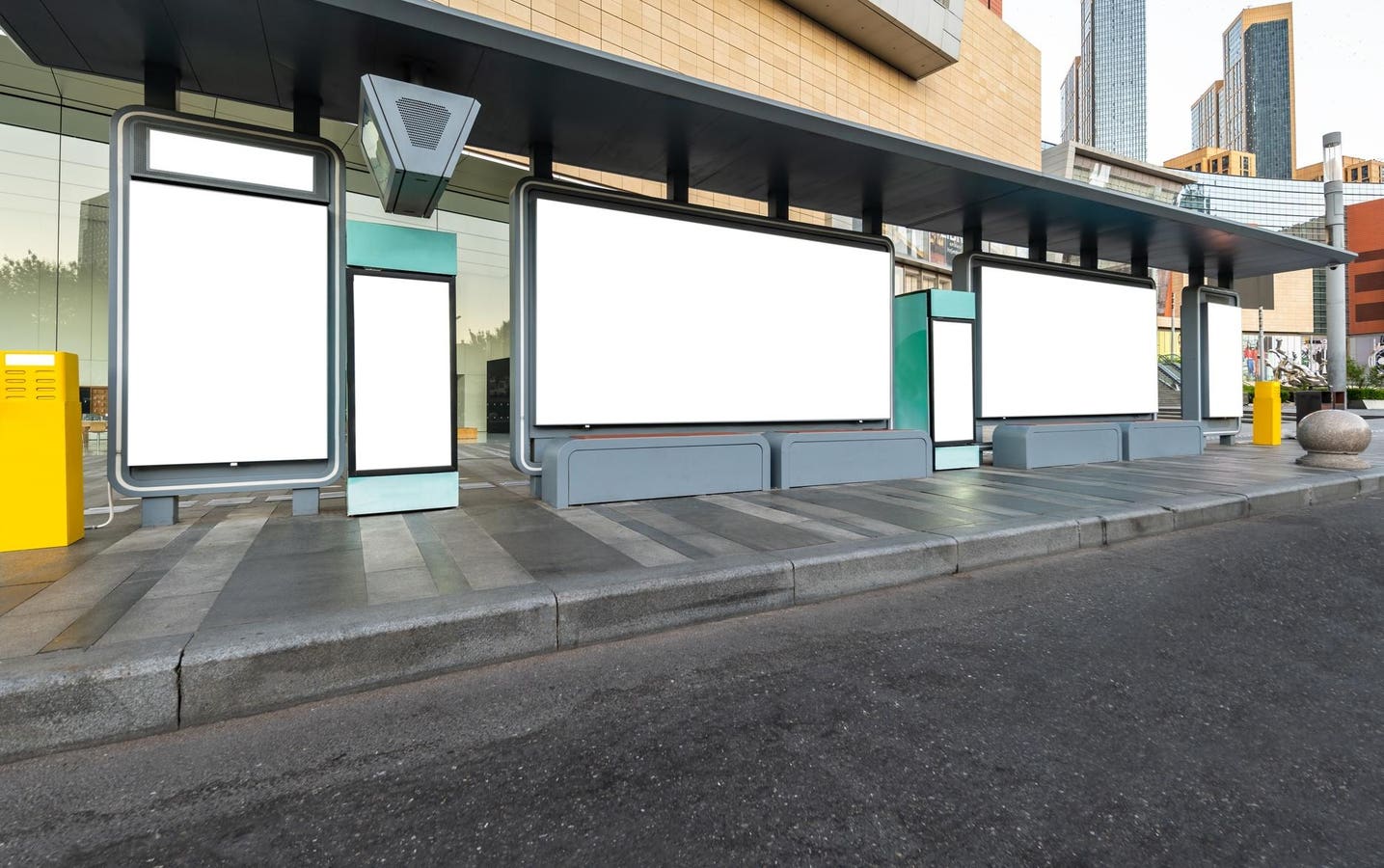FIFA President Gianni Infantino (L) speaks in front of former Brazilian player Ronaldo (C) and … More
Ahead of FIFA 2025 Club World Cup final, FIFA president Gianni Infantino has responded to questions about extreme heat and match delays that impacted the tournament. With 2026 FIFA 2026 Men’s World Cup front of mind, he said, “we have stadiums with roofs and we will definitely use these stadiums during the day next year.” What difference will that actually make to resilience, sustainability and climate-preparedness?
Extreme heat and lightning storms have overshadowed this year’s soccer tournament, which comes to a close today. For 2026 Men’s World Cup, 14 of 16 host cities will likely breach safe Wet-Bulb Globe Temperature thresholds, unless broader adaptation is implemented, experts at Brunel University have cautioned. Only two host cities, Vancouver and Seattle, are projected to avoid dangerous heat stress.
Using roofed stadiums for matches during the hottest part of the day makes sense, helping protect players and fans from extreme heat and sudden storms. However, it isn’t the straightforward solution that is grabbing headlines. Men’s World Cup 2026 stadiums with retractable roofs and air conditioning are Mercedes‑Benz Stadium in Atlanta, AT&T Stadium in Dallas and NRG Stadium in Houston. BC Place in Vancouver has a retractable roof but says it “should be considered an ‘open-air’ stadium whether the roof is open or closed, and guests are encouraged to dress accordingly, based on the temperature outdoors.” Los Angeles’ SoFi stadium has a canopy roof, but has open sides for natural ventilation.
Are Roofed Stadia The Climate Saviour of MWC 2026?
Despite Infantino’s assurances, only around 30% of the 104 scheduled matches for the Men’s World Cup, 31 games, are set to take place in stadiums with roofs. The selection of host cities and venues was finalized in 2022, and with the tournament now just a year away, organizers, venues, cities and local authorities will be deep into planning, implementation and operational rollout.
Whilst not stated as an option by Infantino or FIFA, it is important to say that at this advanced stage, making changes to host venues is unlikely. Additional roofed stadiums exist in the U.S., but most are not built to accommodate FIFA-regulated soccer pitches, which are longer and wider than NFL football fields.
EAST RUTHERFORD, NEW JERSEY – JUNE 19: A general view of the LED screen which is displaying a severe … More
Increasing the number of matches played in roofed stadiums during the tournament may be theoretically possible, but isn’t probable. It would involve considerable logistical complexity and could carry both financial and operational consequences for host cities, stadiums and FIFA.
FIFA mandates that all matches be played on natural grass and existing pitches with artificial turf surfaces are overlaid for soccer tournaments. Retractable roofs, while helpful for climate control, restrict natural light and airflow, making it more difficult to maintain healthy grass over extended periods. Grass requires sunlight, ventilation, and irrigation, all of which are more difficult to manage under enclosed conditions.
Additional matches taking place on these grass surfaces would mean more wear and tear, harder recovery and lower quality surfaces. Enclosed venues rely on air conditioning and lighting, increasing the energy use of the venue, so renewable energy sourcing would also be essential to avoid unnecessary spikes in carbon emissions.
Other Adjustments For Climate-Preparedness
Slotting daytime games, when temperatures are at their peak, into stadiums with roofs is a practical solution. However, depending on the scale of games, concentrating these matches into a limited number of venues may add complexity around coordinating TV broadcast timings, match sequencing, fan transportation logistics, and stadium turnaround times.
Focus should instead be on adapting climate-resilient plans for open-air venues, which are most vulnerable to extreme weather events, to better protect players and fans from dangerous heat and storms. A climate-smart Men’s World Cup should include free water refill points, venues powered by renewable energy, shaded seating areas, real-time WBGT monitoring to trigger more frequent cooling breaks and extended half-time intervals during heat spikes. Additional measures like misting stations and climate-controlled concourses and transit hubs could support player and fan comfort and safety, but can come at an environmental cost.
PHILADELPHIA, PENNSYLVANIA – JUNE 24: Enzo Maresca manager / head coach of Chelsea walks towards an … More
Temporary air conditioning units can provide relief from extreme heat, however these systems consume tremendous amounts of energy. The use of Qatar World Cup in 2022 sparked concerns among climate advocates that this infrastructure could become a dangerous new norm.
Infantino was not clear on a path forward on these areas at the press conference. He acknowledged the importance of cooling breaks but his response lacked detail, saying “we will see what we can do.” Even with a few covered venues in play, no single solution will be enough to fully protect the 2026 tournament from the growing risks of climate change.
Using roofed stadiums during the day, and seeing what they can do about cooling breaks for Men’s World Cup 2026 doesn’t yet speak to any solid adjustments for climate-preparedness by FIFA. With the majority of host cities having open-air venues and likely to exceed safe heat thresholds, FIFA must go further. Real climate-readiness for the 2026 Men’s World Cup and future major sports tournaments demands not just shade and shelter, renewable energy use and adaptation through cooling breaks, but a fundamental rethink by major sports tournaments organizers on how to genuinely and holistically mitigate environmental impacts. Only then can future World Cup’s begin to credibly deliver the basics of sustainability and safety, without the drama of sweat, storms, or scandal overshadowing the spectacle.









